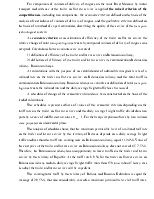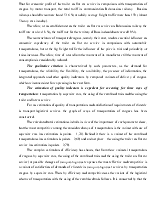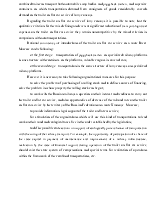














ADDENDUM A
(binding)
THE ANALYSIS THE EXISTING DELIVERY SCHEMES OF VALUABLE
CARGOES AND THE ESTIMATION OF AN OPPORTUNITY OF ADOPTION
OF TRAILER ON FLAT CAR SERVICE FOR THEIR TRANSPORTATION
Nowadays the problem of the perfection of existing kinds of transportations and the introduction of new kinds of transportations of cargoes takes place into transport system of our republic in a complex of tasks and problems of economic development. Redistribution of volumes of transportations between various types of transport has transferred a priority to that type of transport which can adapt to fast maintenance of constantly changing requirements of consumers of transport services most flexibly. All greater topicality for the railway gets attraction of additional volumes of transportation of cargoes. Perspective area of reception of these additional volumes are the international transportations of cargoes where recently the motor transport especially has become more active.
Transportations of valuable cargoes are not mastered niche for the railway too. As highly profitable valuable cargoes are not favorable for transporting (a profitability 0,35, a turnover of 90 days) in the intrarepublican and export-import message (up to 5000 kilometers). For the first it speaks about restriction of distance, and for export-import – high tariffs. The leaging role in appeal of a railway to transportation of valuable cargoes is played by term of delivery because of much smaller share of the transport tariff in the final price of production, that means that at work with such cargoes first of all it is necessary to lower the term of delivery, and for highly profitable cargoes (500-1000 US dollars for ton) in the export-import message is necessary also the subsequent decrease of the tariff. Nowadays motor transport borrows the lead position on transportation of valuable cargoes.
The modern cargo owner has quite strict demands on transport service: on terms of delivery, safety of cargoes, quality of forwarding service. To satisfy these demands that carrier which gives a full complex of services on transportation of a cargo can only. In this situation road transportation firms have significant advantages towards railways.
In the formed conditions it is necessary to research an opportunity of mastering and development of new kinds of transportations on a railway transport, in its close interaction with road transport. Such transportations will allow to create a continuous transport chain from consignor of goods up to consignee, meeting the increased demands of clients on quality of given services, and most full using advantage of each type of transport. At interaction railway and road transport reliability, speed and transport ability of the first are combined with flexibility and efficiency of the second. From the economic position these transportations become the effective decision as for the cargo owners demanding guarantee of quality and reliability of transportations, and for development of commercial activity of the road transportation enterprises.
Functional suitability of a concrete type of transport is appreciated by many criteria: a spatial arranging of initial and terminal points of transportation, time of delivery, quality of given services, cost of transportation etc. The item great value is given now to questions of the account of ecological conditions, traffic safety, power consumption, parameters of quality of transport service and transport maintenance.
Trailer on flat car service are such when inside of automobile transportation process the railway transportation participates.
Trailer on flat car service are defined as the combined transportations at which automobile vehicles (trailers, swap bodies, trailers for heavy indivisible cargoes, lorry convoys with its full complement) are transported on a specialized wagons (platforms). The combined transportations can be characterized as a kind of freight traffic with transport chains between consignors of goods and consignees at preservation of transport packing during an overload of intermodal units from one type of transport on another (drawing A.1).
An intermodal unit is a load-carrying “box” designed to be hauled by more than one mode, with transfer between modes typically undertaken at terminals by overhead cranes. The main types of intermodal units are:
– containers – used primarily for deepsea shipment in container ships, containers are lifted from their top corners (“top lift”) between ships, trains and lorries. Can be stacked several high, saving space at terminals;
– swap bodies – used primarily for road, rail and barge shipment in Europe, most units are lifted from their bottom edges (“bottom lift”) and most are not normally designed for stacking, and can therefore take up more floorspace at terminals;
Уважаемый посетитель!
Чтобы распечатать файл, скачайте его (в формате Word).
Ссылка на скачивание - внизу страницы.